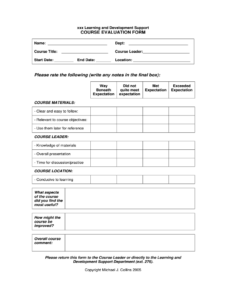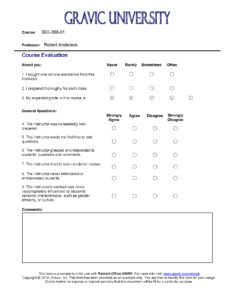Managing a bustling workplace can sometimes feel like orchestrating a symphony. There are so many moving parts: projects, deadlines, team dynamics, and, of course, the people who make it all happen. Amidst this organized chaos, one small but mighty tool often goes overlooked: the humble sign-in sheet. It might seem like a simple piece of paper, but its role in maintaining order, ensuring accountability, and even boosting efficiency is truly remarkable.
In a world increasingly reliant on digital solutions, the timeless effectiveness of a physical or digital sign-in record remains a cornerstone for many businesses. Whether you are running a small startup, a bustling retail store, a quiet office, or a busy construction site, having a clear system for tracking who is in and out can save a lot of headaches. It is not just about knowing who showed up; it is about creating a clear record that benefits both the employer and the employee.
The Undeniable Benefits of Using an Employee Sign-In Sheet
Implementing an employee sign-in sheet might seem like a minor administrative detail, but its ripple effect across various aspects of your business is significant. First and foremost, it establishes a clear, undeniable record of attendance. This simple act eliminates ambiguity regarding arrival and departure times, which can be incredibly helpful for payroll processing and resolving any discrepancies that might arise. It provides a foundation for accurate timekeeping, ensuring everyone is compensated fairly for their hours worked.
Beyond just basic attendance, a well-kept sign-in sheet plays a crucial role in operational efficiency. Imagine a scenario where you need to quickly ascertain who is on premises for an urgent meeting or to delegate an immediate task. A quick glance at the sheet gives you an instant overview, saving precious time that would otherwise be spent searching or calling around. This immediate visibility can streamline daily operations and improve responsiveness within your team.
Safety and emergency preparedness are other critical areas where an employee sign-in sheet shines. In the event of an emergency, such as a fire drill or a natural disaster, knowing exactly who is in the building is paramount for evacuation procedures and ensuring everyone is accounted for. This record can be a lifesaver, allowing emergency responders to quickly identify who might still be inside or who needs assistance. It is a simple tool that provides immense peace of mind in high-stakes situations.
Furthermore, these sheets provide vital documentation for legal compliance and internal audits. Accurate records of work hours are often required by labor laws and regulations. Should there ever be a dispute over wages, overtime, or attendance, the sign-in sheet serves as an objective, tangible piece of evidence. It helps protect both the company and the employees by providing a clear, chronological history of presence at the workplace.
Beyond Just Punching In
An effective employee sign-in sheet template can be customized to do more than just record arrival and departure. Consider including fields for:
- Tracking lunch breaks or other designated breaks to ensure compliance with labor laws.
- Logging hours spent on specific projects or departments for internal cost allocation.
- Recording overtime hours with employee acknowledgment, simplifying payroll.
- Noting reasons for late arrival or early departure for record-keeping and HR purposes.
Crafting the Perfect Employee Sign-In Sheet Template for Your Business
When it comes to designing an employee sign-in sheet template, one size rarely fits all. The ideal template will be tailored to the specific needs and daily rhythms of your organization. Thinking about how your team operates, what information is most crucial for your administrative tasks, and what level of detail you require for payroll and compliance will guide you in creating a truly effective system. It is about striking a balance between comprehensive data collection and user-friendliness.
Start by considering the fundamental pieces of information everyone needs to capture. This typically includes the employee’s name and the date, as these are the absolute basics for any attendance record. From there, you will want to add dedicated spaces for “Time In” and “Time Out.” Clarity is key here, so ensure there is ample room for employees to write legibly or to input their times clearly if it is a digital form.
Beyond the essentials, think about any additional data that would be beneficial. For instance, if your employees often work on different projects or in various departments, adding a column for “Department” or “Project Name” can be incredibly useful for internal tracking and billing. A “Signature” line is also a strong recommendation, as it adds an extra layer of accountability and serves as confirmation that the employee acknowledges the recorded times.
Whether you opt for a physical printout that employees manually sign or a digital solution that captures entries, the template should be intuitive and easy to use. A complicated or confusing sheet will lead to errors and frustration, defeating its purpose. Accessibility is also important; ensure it is placed in a convenient, visible location if physical, or easily accessible if digital. The easier it is, the more consistently it will be used.
Key Elements to Include
- Employee Name: Clearly identifiable space for each staff member.
- Date: A dedicated column for the date of attendance.
- Time In: A precise spot for when the employee begins their workday.
- Time Out: An equally precise spot for when the employee finishes their workday.
- Signature Line: To confirm the accuracy of the recorded times by the employee.
- Optional: Department/Project: If tracking work across different areas is important.
- Optional: Lunch Break In/Out: For organizations with strict break policies.
- Optional: Notes/Remarks: A small section for any unusual circumstances or comments.
Implementing a reliable system for tracking employee attendance is a smart move for any business. It streamlines administrative tasks, enhances accountability, and provides peace of mind, knowing that you have accurate records readily available. Whether you are aiming for better payroll management, improved workplace safety, or simply a more organized approach to daily operations, a well-designed attendance sheet can significantly contribute to your goals.
By taking the time to set up an effective system, you are not just ticking a box; you are investing in a more efficient, transparent, and secure work environment for everyone. It is a foundational tool that supports fair practices and helps your business run smoothly, allowing you to focus on growth and innovation rather than getting bogged down by attendance ambiguities.



